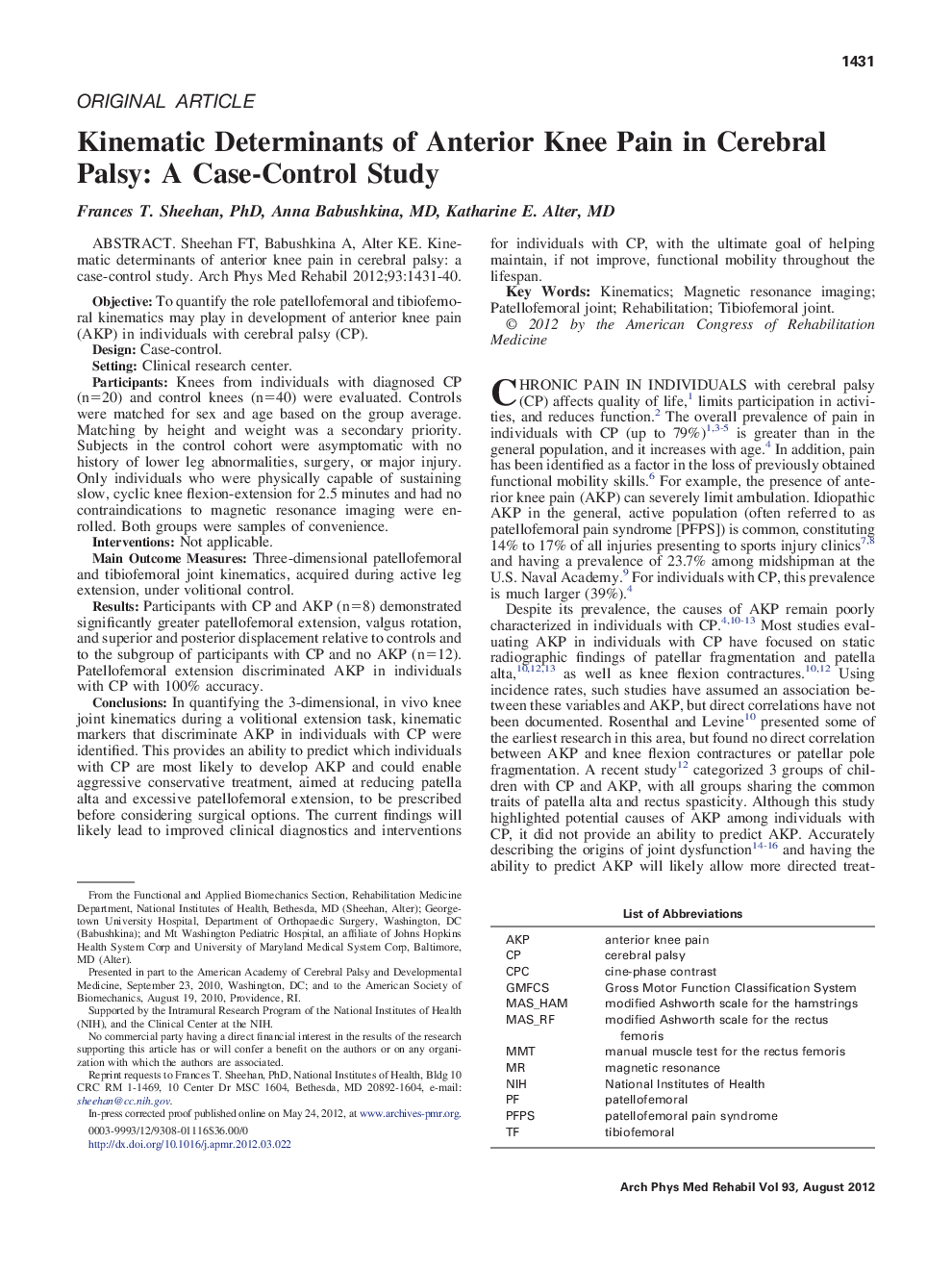| Article ID | Journal | Published Year | Pages | File Type |
|---|---|---|---|---|
| 3449568 | Archives of Physical Medicine and Rehabilitation | 2012 | 10 Pages |
Abstract
In quantifying the 3-dimensional, in vivo knee joint kinematics during a volitional extension task, kinematic markers that discriminate AKP in individuals with CP were identified. This provides an ability to predict which individuals with CP are most likely to develop AKP and could enable aggressive conservative treatment, aimed at reducing patella alta and excessive patellofemoral extension, to be prescribed before considering surgical options. The current findings will likely lead to improved clinical diagnostics and interventions for individuals with CP, with the ultimate goal of helping maintain, if not improve, functional mobility throughout the lifespan.
Keywords
Related Topics
Health Sciences
Medicine and Dentistry
Medicine and Dentistry (General)
Authors
Frances T. PhD, Anna MD, Katharine E. MD,
